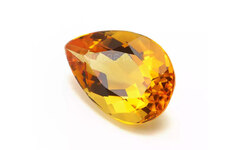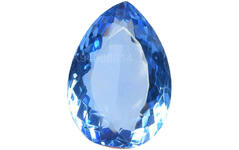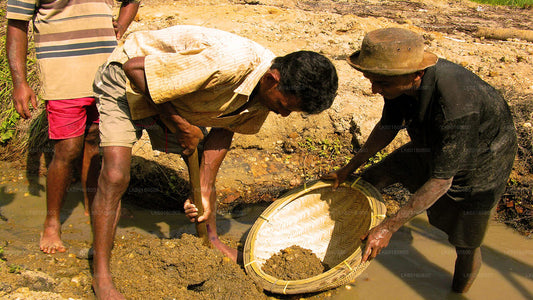
Gems
Sri Lanka’s gem industry has a very long and colorful history. Sri Lanka was affectionately known as Ratna-Dweepa which means Gem Island. The name is a reflection of its natural wealth. Marco Polo wrote that the island had the best sapphires, topazes, amethysts, and other gems in the world.
Topaz
Topaz actually has an exceptionally wide color range that, besides brown, includes various tones and saturations of blue, green, yellow, orange, red, pink, and purple. Colorless topaz is plentiful, and is often treated to give it a blue color. Topaz is also pleochroic, meaning that the gem can show different colors in different crystal directions.
- Varieties: Coloured varieties, Imperial (reddish-orange), chatoyant material (very rare).
- Sources: Sri Lanka (blue), Prime source is Brazil, Mexico (mostly poor quality, brownish-yellow), Russia, South Africa (blue), Utah, Afghanistan.
- Toughness: Poor, extremely easy basal cleavage – treat with care.
- Precautions: The gem's color is generally stable to light, but prolonged exposure to heat or sunlight might cause fading in yellow-to-brown, reddish brown, or dark brown topaz. Topaz is affected only very slightly by chemicals. It's important to avoid steam or ultrasound for cleaning topaz: Warm, soapy water works best.
- Treatments: Some golden or yellow topaz can be heated to yield a pink or purplish red color. The color of pale brown or “sherry” topaz can sometimes be improved by gamma irradiation, but heating or exposure to sunlight usually reverses the process. Color fading of natural brown, sherry, and some blue topaz isn't uncommon.
- History: The name for imperial topaz originated in nineteenth-century Russia. At the time, the Ural Mountains were topaz's leading source, and the pink gemstone mined there was named to honor the Russian czar. Ownership of the gem was restricted to the royal family. Today, topaz is one of the US birthstones for November.
- Cuts & Uses While many people think about the shape of topaz they might want to buy, fewer consider how the gem is cut from rough. In its raw form, this gem is a crystal or other form of uncut topaz stone. After mining and treatments are over, a gem cutter or lapidary selects a stone to be cut into faceted gems.
Explore Gem Mines
-
Explore Gem Mines in Ratnapura from Negombo
Regular price From $88.00 USDRegular priceUnit price / per -
Explore Gem Mines in Ratnapura from Colombo
Regular price From $123.13 USDRegular priceUnit price / per$132.60 USDSale price From $123.13 USDSale -
Explore Gem Mines in Rathnapura from Kalutara
Regular price From $152.92 USDRegular priceUnit price / per$191.15 USDSale price From $152.92 USDSale -
Explore Gem Mines in Ratnapura from Mount Lavinia
Regular price From $178.20 USDRegular priceUnit price / per$222.75 USDSale price From $178.20 USDSale
Services of Lakpura LLC
NaN
/
of
-Infinity






























